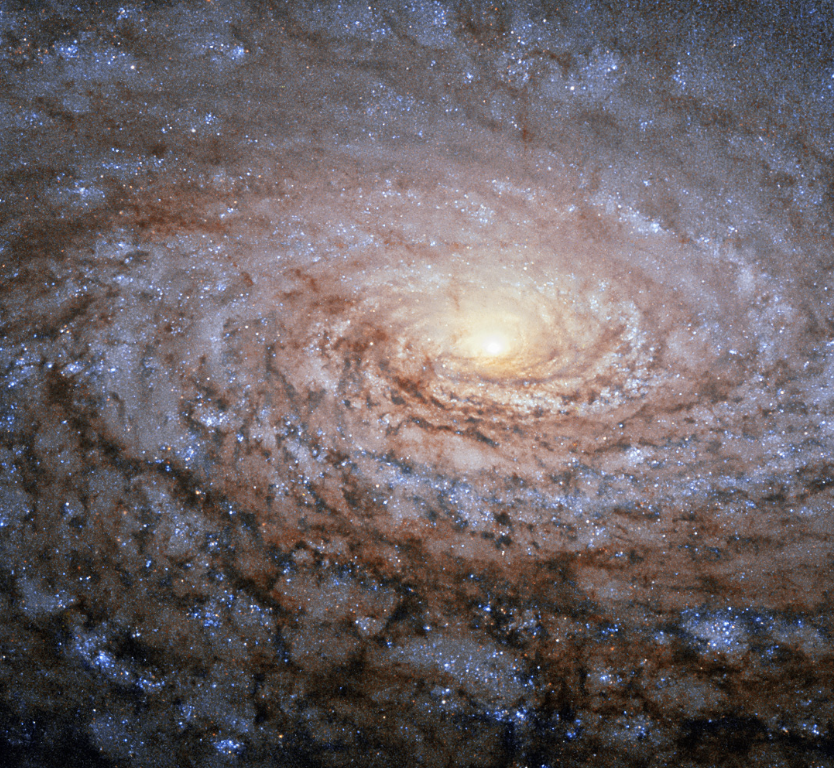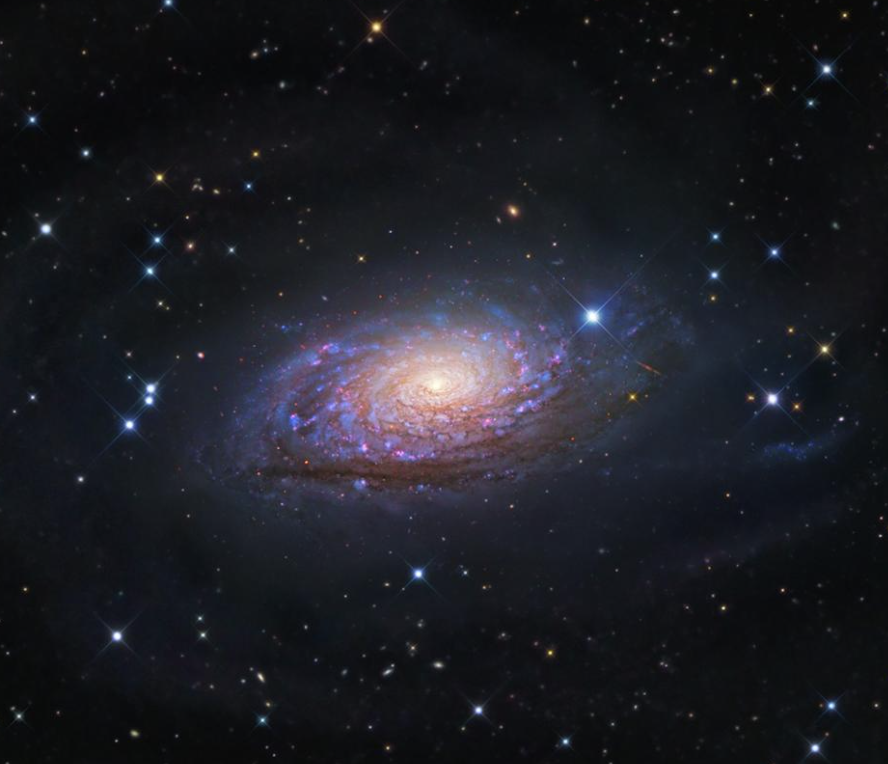The Sunflower Galaxy
The sunflower galaxy, also known as Messier 63 or M63, is a stunning spiral galaxy that captivates astronomers and space enthusiasts with its unique appearance and intricate structure. This galaxy gets its name from its resemblance to the vibrant and symmetrical petals of a sunflower. In this article, we will explore the captivating features and fascinating characteristics of the sunflower galaxy.

Characteristics of The Sunflower Galaxy
Messier 63 belongs to the category of spiral galaxies, characterized by their prominent spiral arms that radiate from a central bulge. These galaxies are classified as type SABc, indicating an intermediate structure between a barred and a non-barred spiral galaxy.
The most distinctive feature of the sunflower galaxy is its spiral arms, which extend from the central region and wrap around the galactic disk. These arms are composed of interstellar gas, dust, and a multitude of stars, showcasing intricate patterns and intricate structures.
Observations and Discoveries
The first recorded observation of the sunflower galaxy dates back to 1779 when French astronomer Pierre Méchain discovered it. Charles Messier later added it to his catalog, Messier 63. Since then, advancements in astronomical technology have allowed for more detailed observations and discoveries regarding the nature of these galaxies.
The sunflower galaxy often display bright knots or patches of star formation within its spiral arms. These regions, known as H II regions, are sites of active starbirth, where hot, young stars are formed from the gravitational collapse of interstellar gas and dust. The high levels of star formation contribute to the vibrant colors and luminosity observed in this galaxy.
Moreover, studies have revealed the presence of a central bar structure within some spiral galaxies. These bars are elongated regions of stars and gas that cross the galactic center, connecting the spiral arms. The presence of a bar can influence the dynamics of a galaxy, affecting the motion of stars and the distribution of interstellar material.

Evolution and Interaction
M63 is subject to various evolutionary processes, including interactions and mergers with other galaxies. Interactions with neighboring galaxies can trigger intense star formation and lead to the distortion of the spiral structure. These interactions may also result in the formation of tidal tails or bridges, as gravitational forces disrupt the normal equilibrium of the galaxy.
Conclusion
The sunflower galaxy, with its striking spiral arms and mesmerizing structures, provides a window into the vast and complex nature of the universe. Through detailed observations and studies, astronomers continue to unravel the mysteries surrounding this galaxy, exploring its evolution, interactions, and the physical processes that shape its remarkable appearance.
As we delve deeper into the understanding of the sunflower galaxy, we gain valuable insights into the formation and dynamics of spiral galaxies, the processes of star formation, and the intricate interplay between gravitational forces and cosmic evolution.
The study of the sunflower galaxy not only enhances our knowledge of our own cosmic neighborhood but also contributes to our understanding of the broader universe and the diverse array of galaxies that inhabit it. This captivating galaxy serves as a reminder of the endless beauty and complexity that lie beyond our own planet, inspiring further exploration and discovery in the realm of astrophysics.
